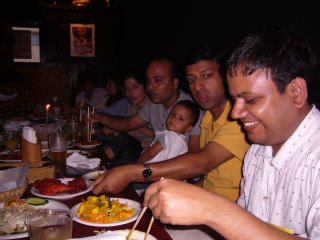
Jul. 8 2008 UP
Pushkar Singh Raikhola
Graduate School of Social Studies, Nepal
Every long journey starts from a single step. For example, being a faculty member from my host university, they selected me as a candidate to pursue a doctoral degree at Doshisha University. This was a great opportunity as well as a challenge for my academic journey toenhance my career.Doshisha University is said to be one of the highly esteemed universities in Japan. Every Faculty and Graduate School, including Graduate School of Social Studies which I am attending, has distinct features. Doshisha has maintained an exemplary academic environment to ensure quality education throughout the century. While becoming accustomed to life in Kyoto, one thing I have found, along with other experiences I have had here, is that the Japanese are pretty flexible when it comes to religion. They visit Shinto shrines for the New Year, hold funerals at Buddhist temples, celebrate Christmas and get married in Church. Kyoto is also famous for festivals and many varieties of food. The restaurants here are of truly exceptional caliber. You get a warm welcome when walking into them and the clientèle are completely respected. Eating in Kyoto is usually a casual, friendly and affordable affair.When Spring comes, Japan's famed cherry trees have captured the hearts of visitors. The Springtime blossoming of cherry trees is a time for nationwide camaraderie in Japan,where friends and colleagues hold boisterous picnics to enjoy the short lived beauty of the blossoms. Kyoto is not just a historical city but also an academic place where friendships can be formed with many international students from every corner of the globe. I found Doshisha was a well-selected place for the study of Japanese culture, among other disciplines.During my one-and-a-half year period of study at Doshisha, I have made a fair share of memories that will warm my heart forever.
Details soon










